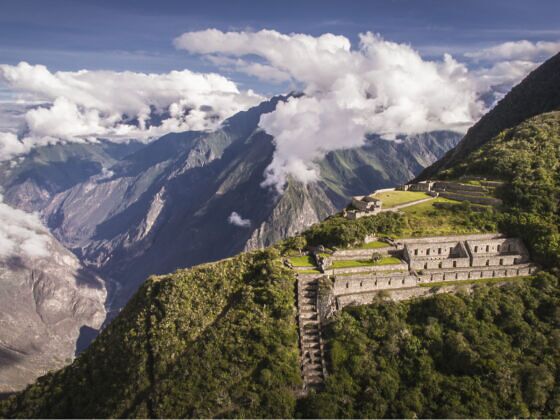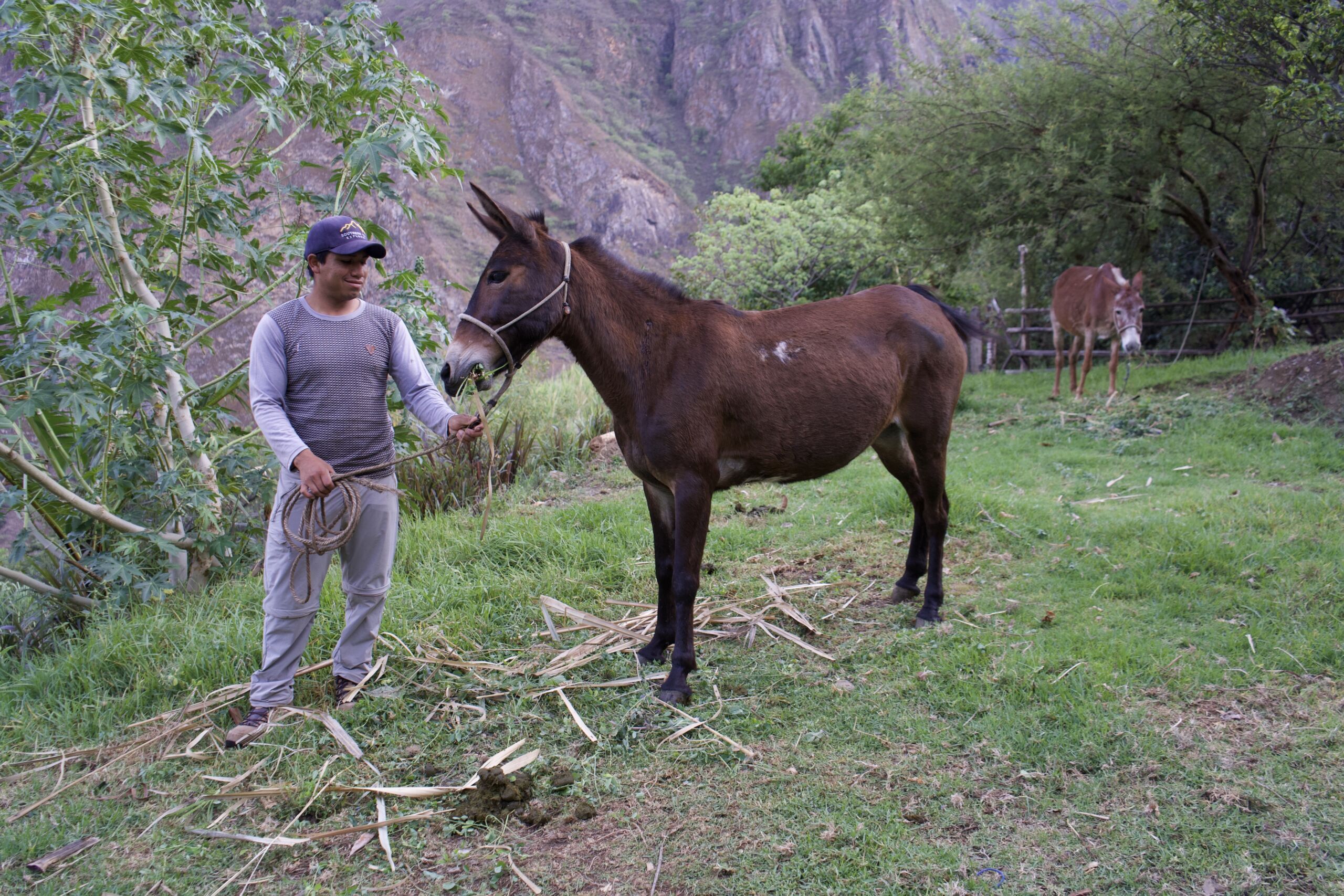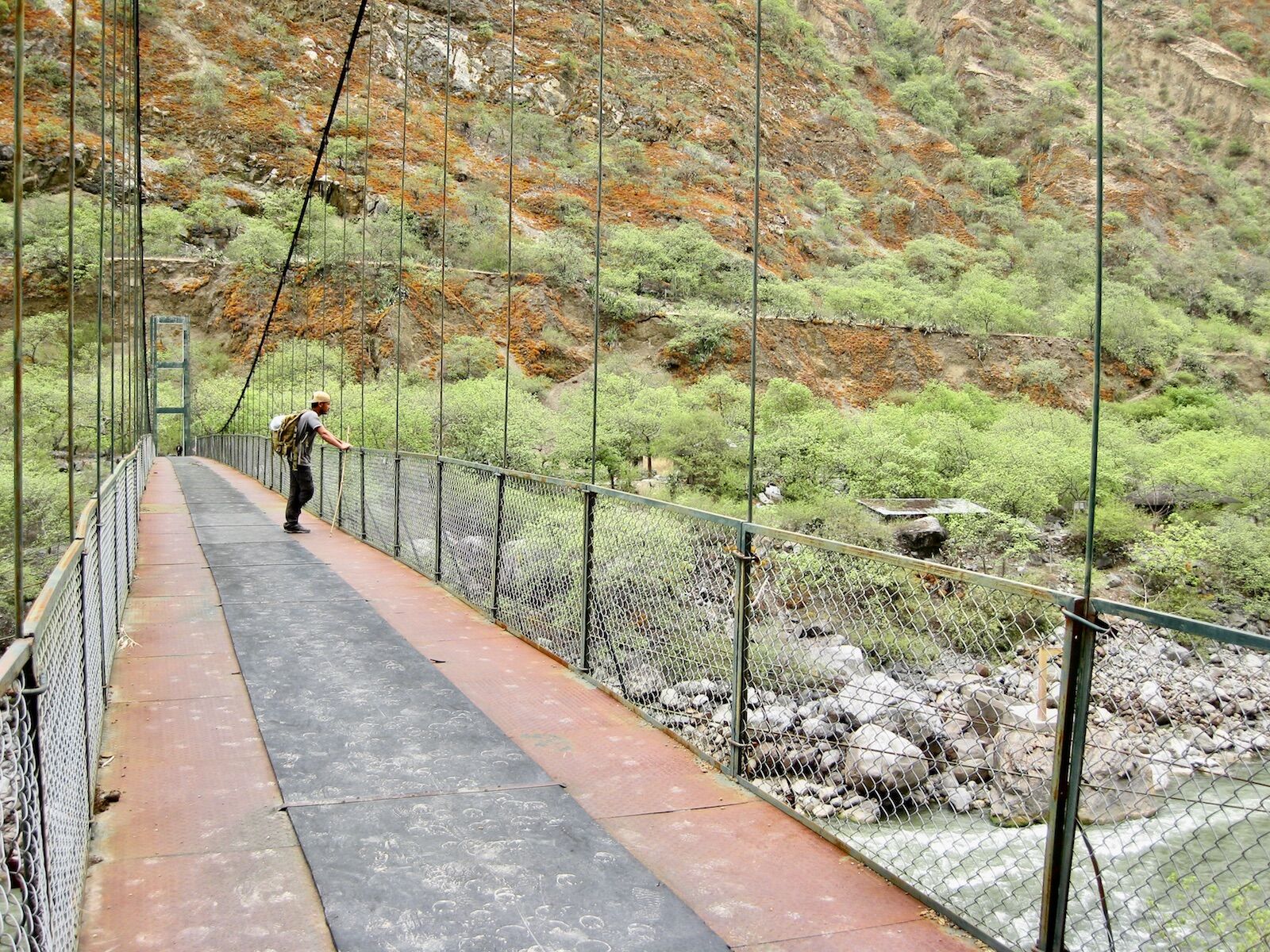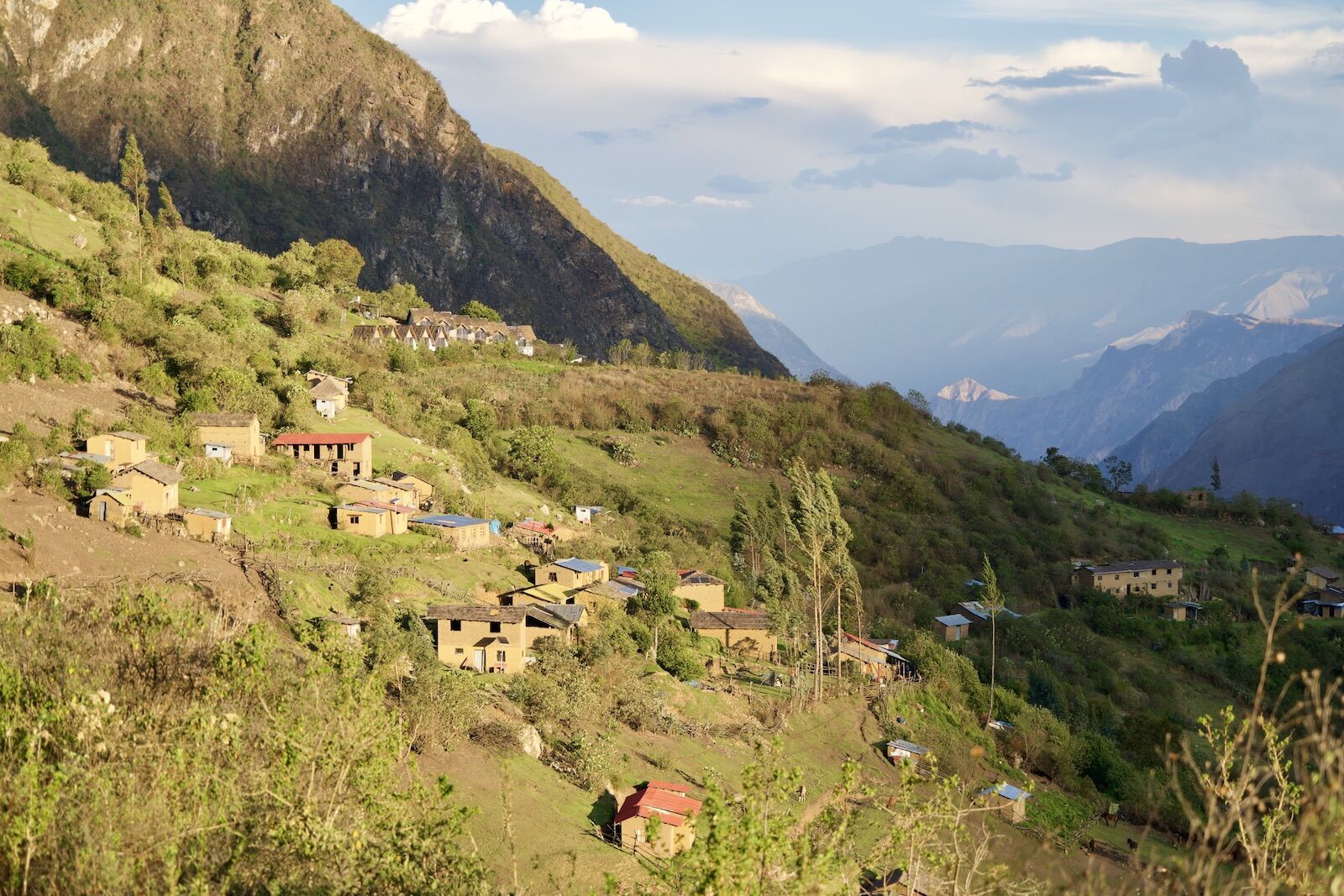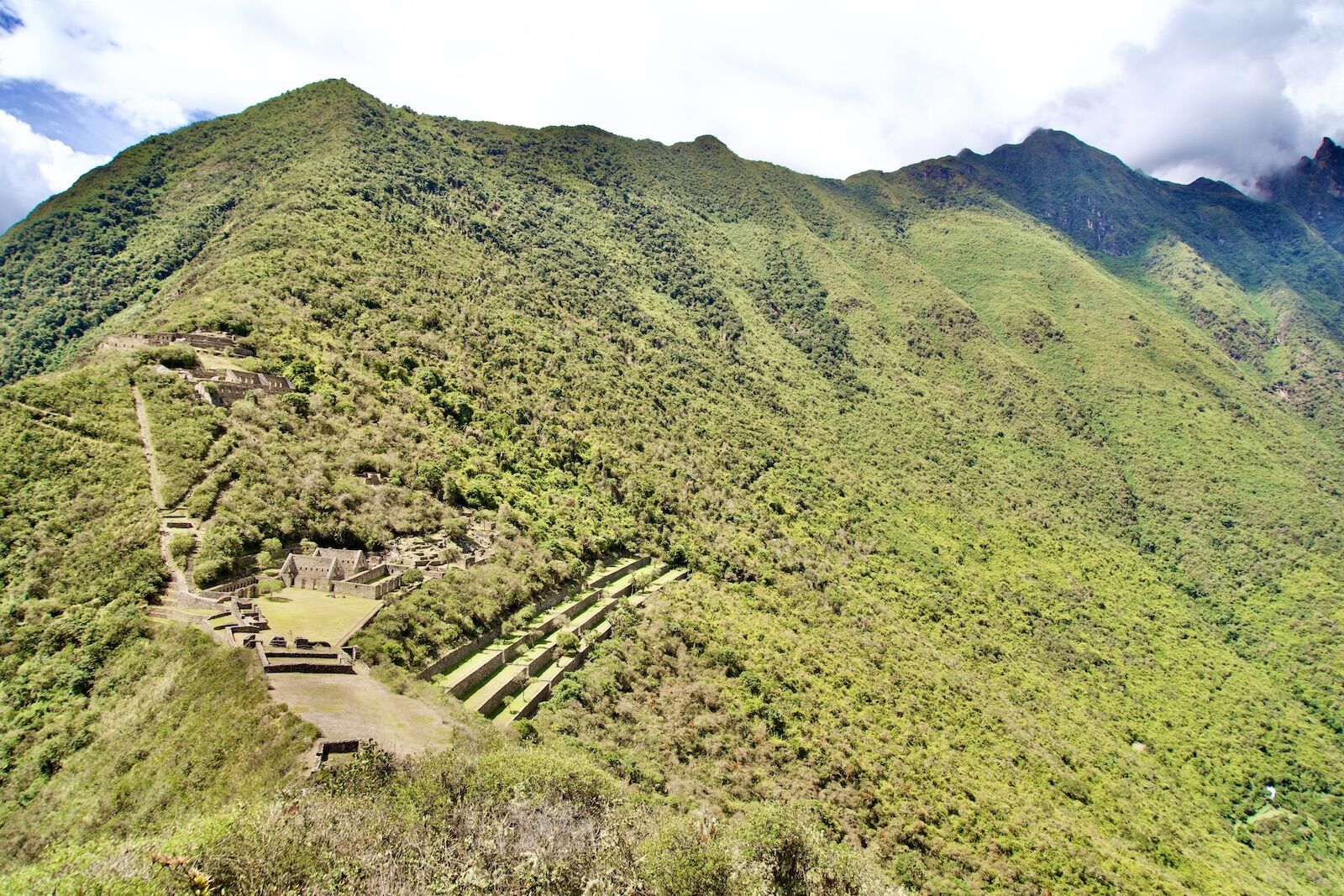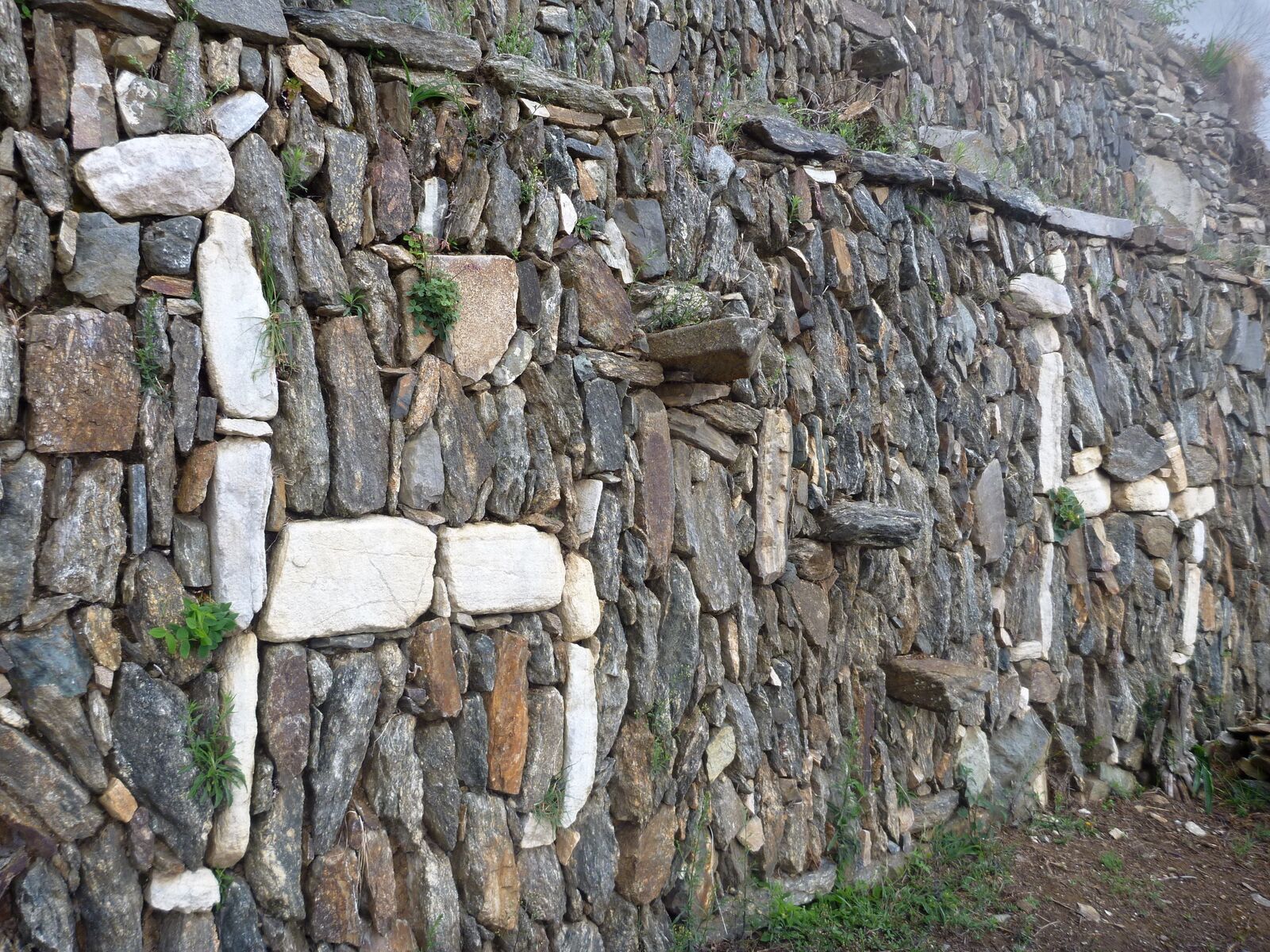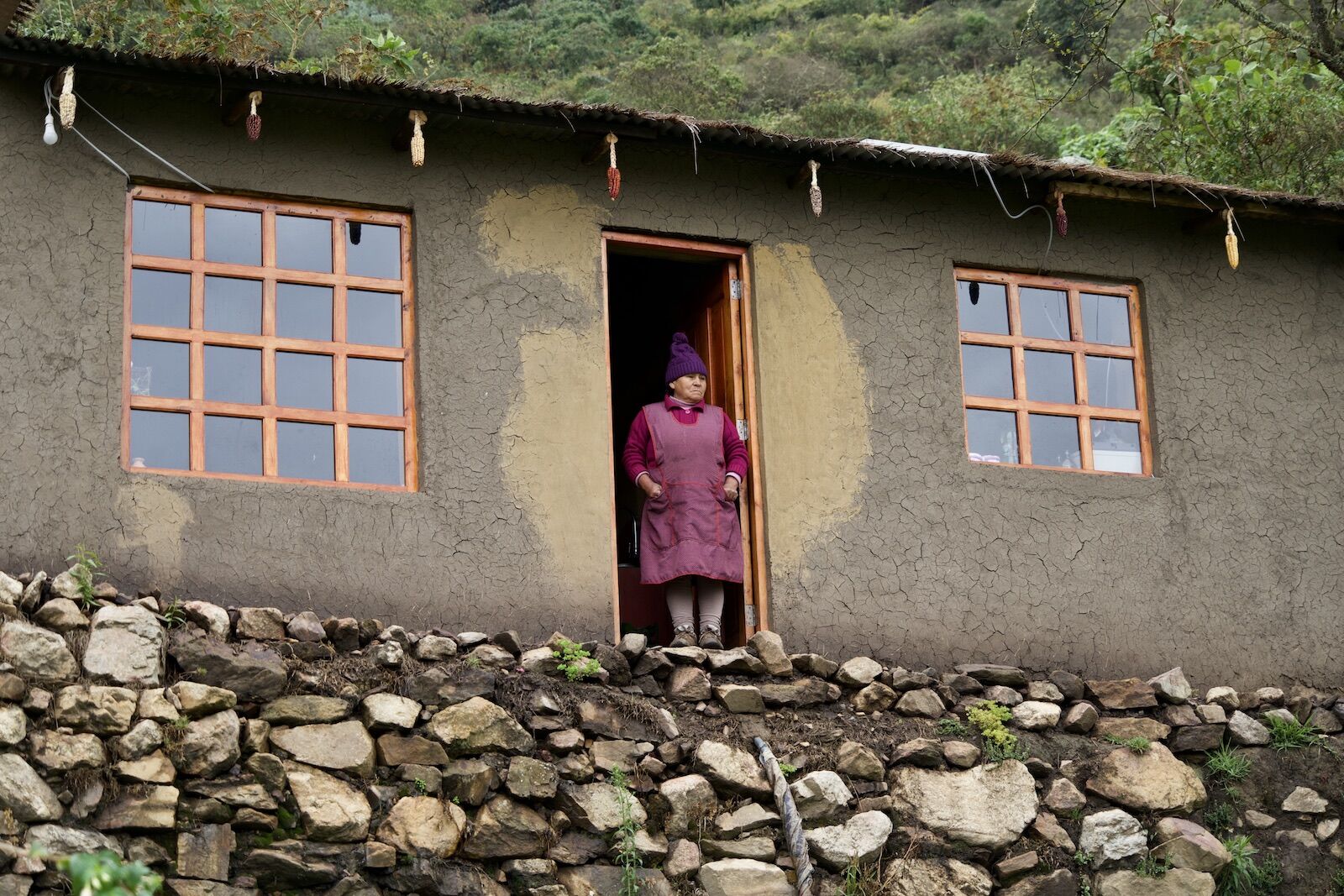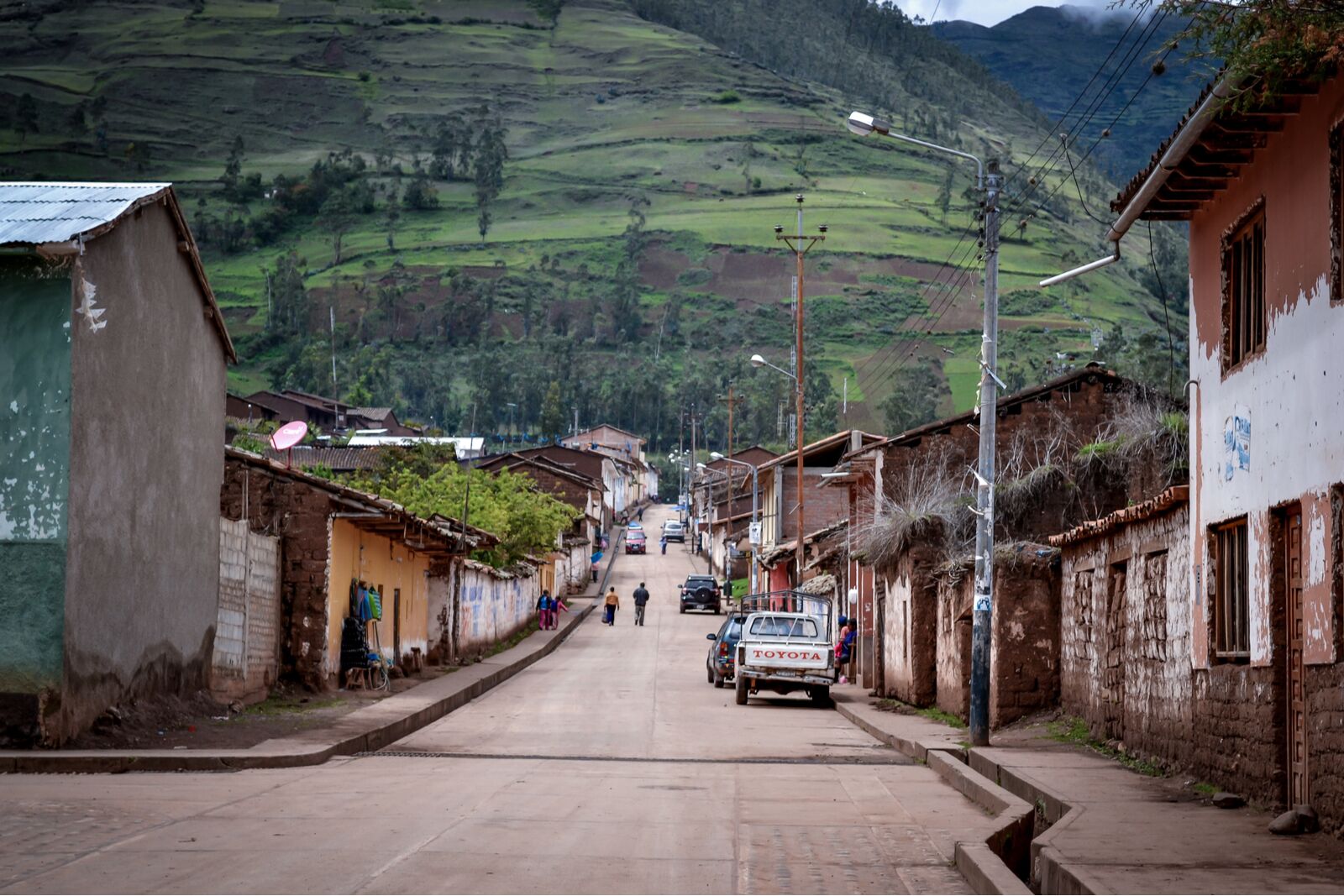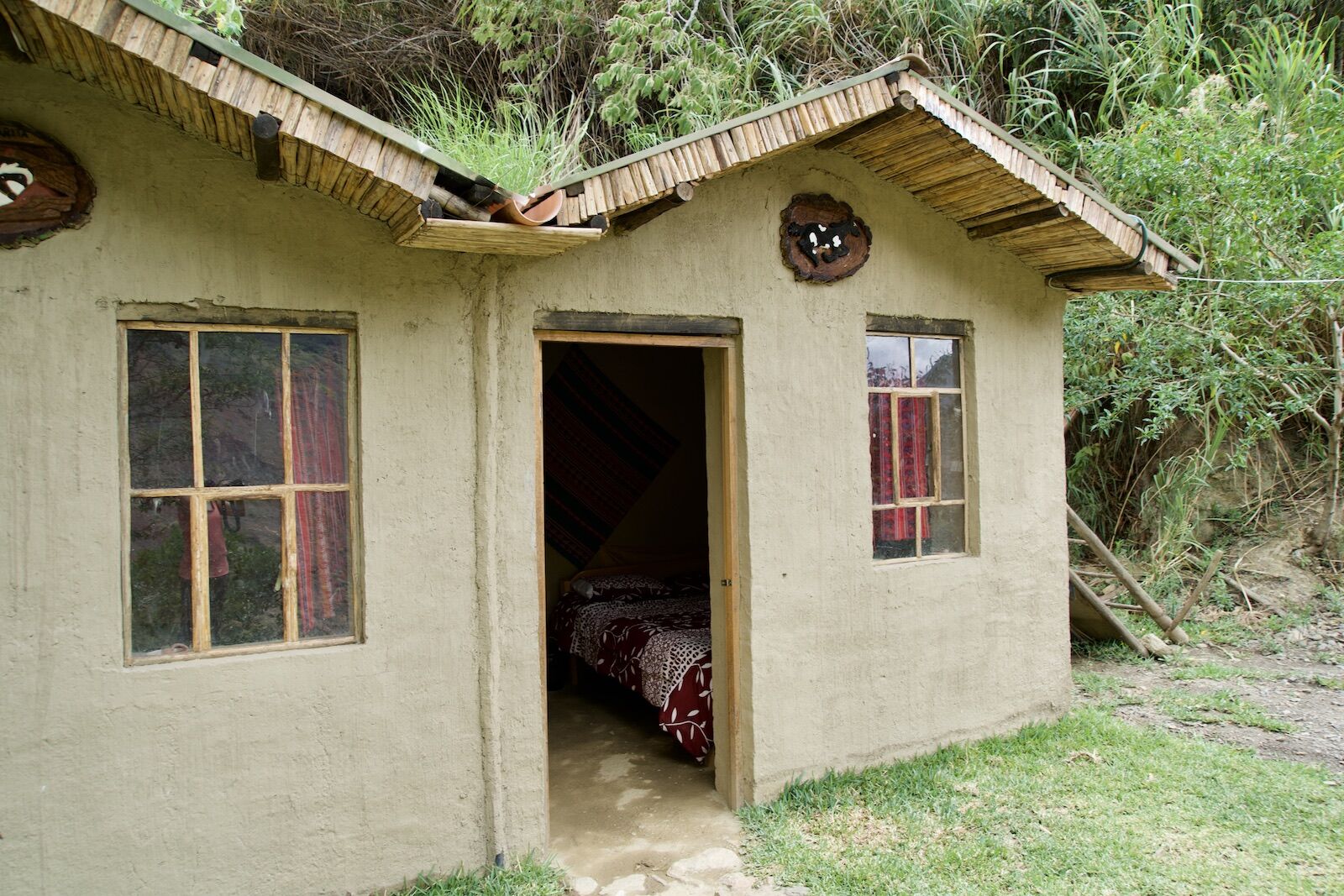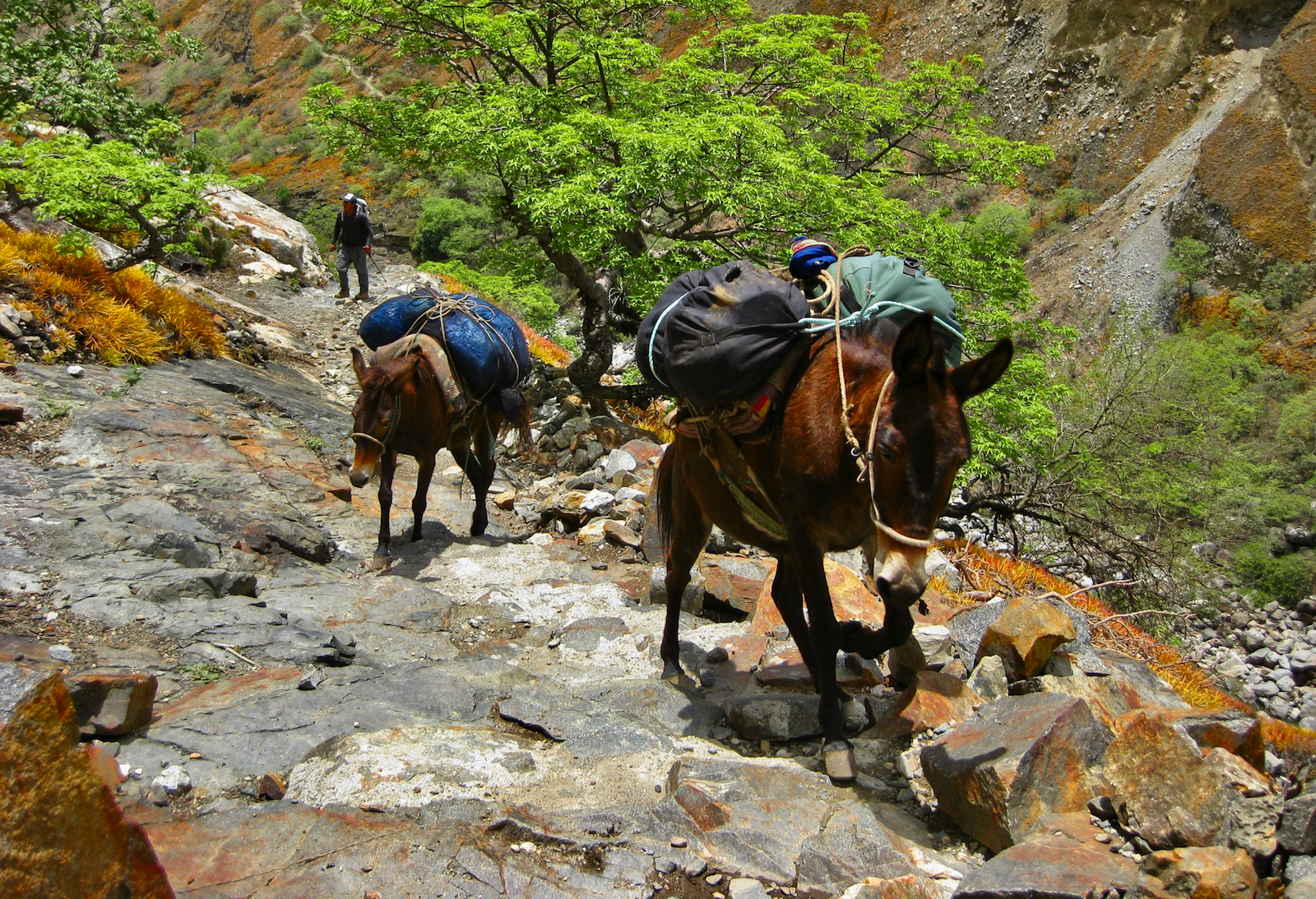Maykol Connaya Puga finished tying the two giant duffel bags together and took a deep breath before heaving them up with a grunt. For a split second, he stood there, regaining his balance with both bags clutched to his chest, before gently setting them on the waiting mule’s back.
These bags contained camping equipment for the first night of our five-day trek. My group knew the trek would be challenging, but as we peered into the Apurímac Canyon and across to the Choquequirao Inca ruins (officially the Choquequirao Archaeological Park), the trek seemed far more visceral. The canyon is deep and Choquequirao is high on the opposite side, making the elevation gain more intimidating than the mileage.
